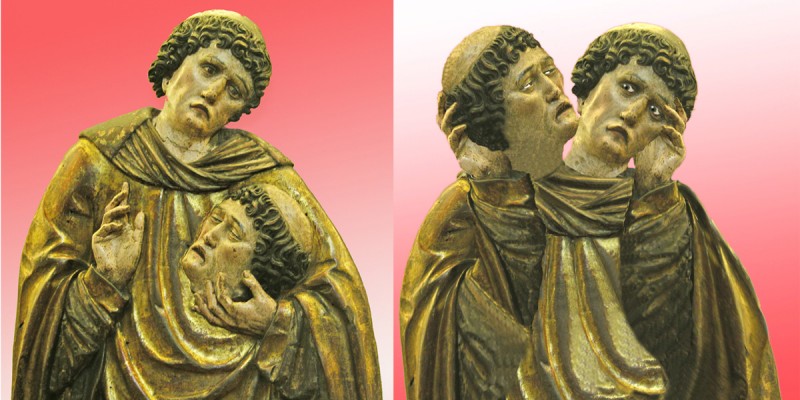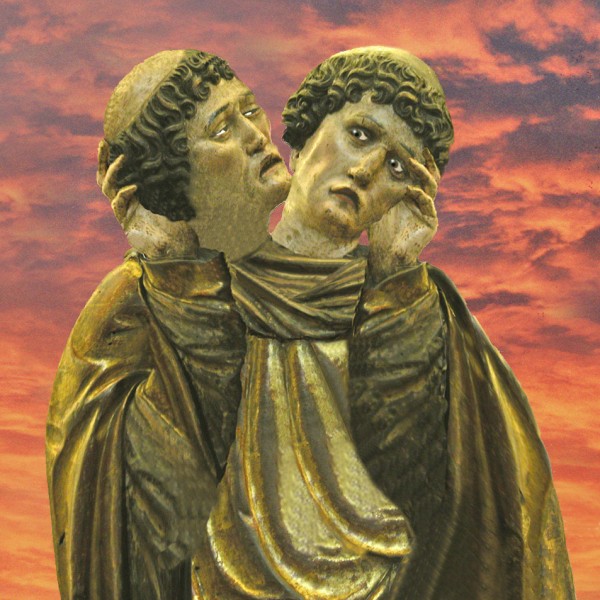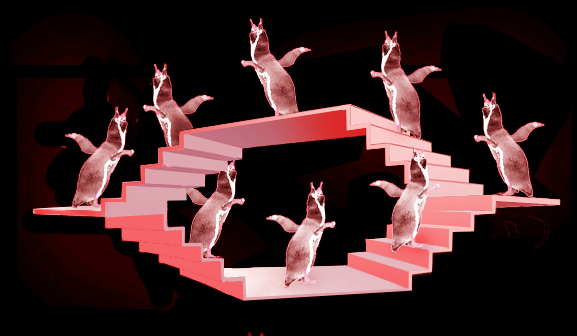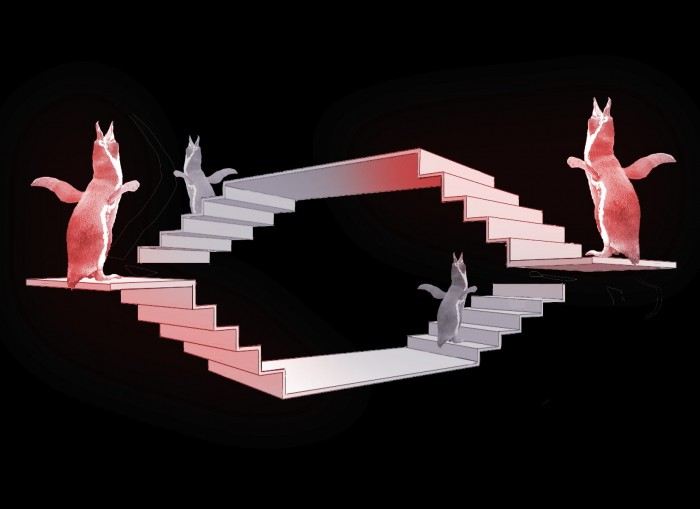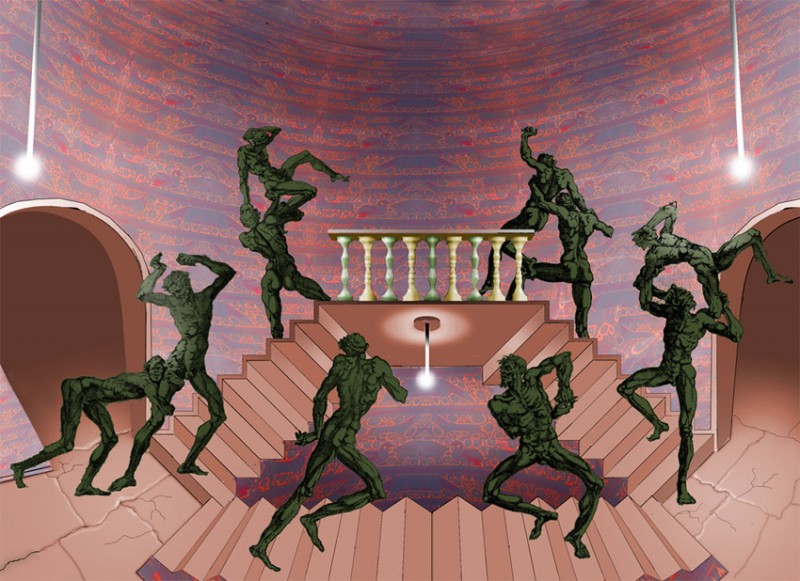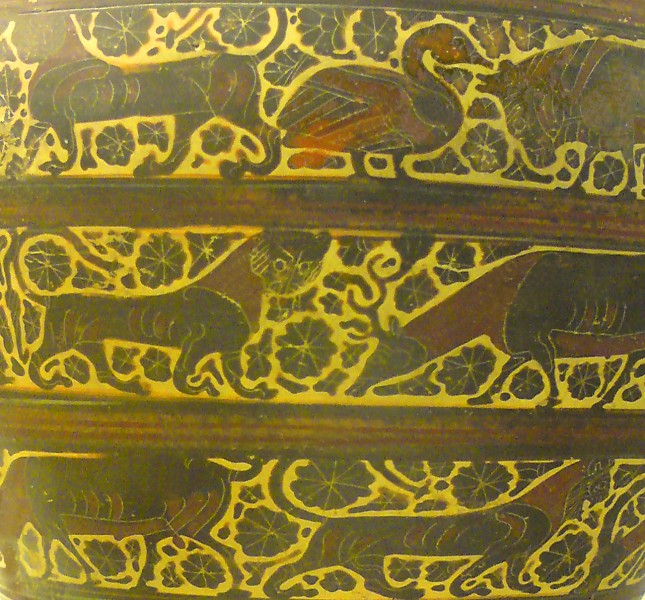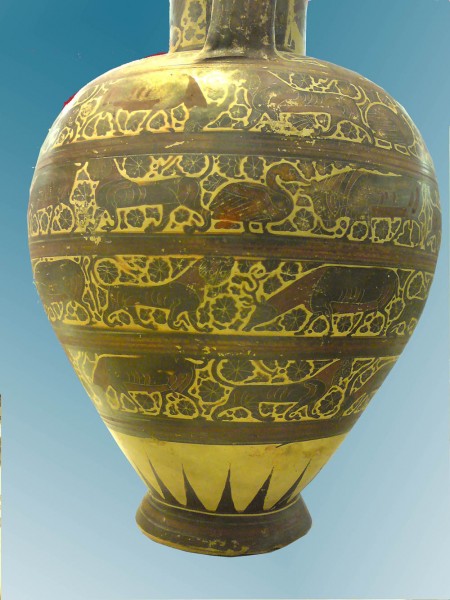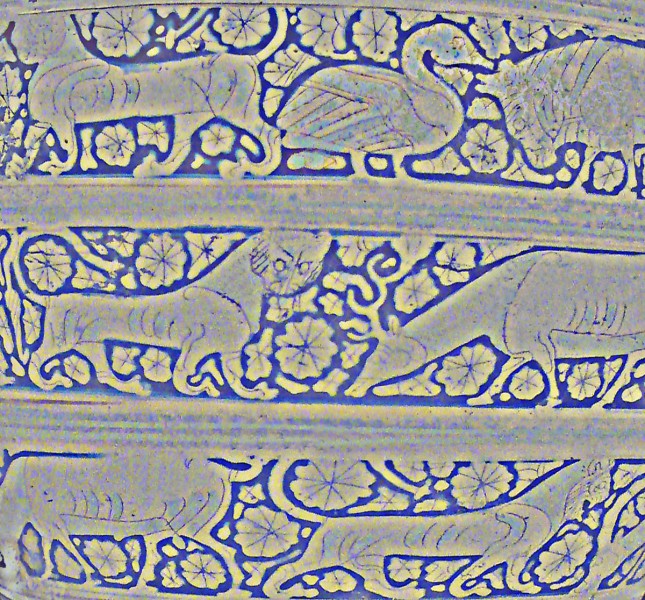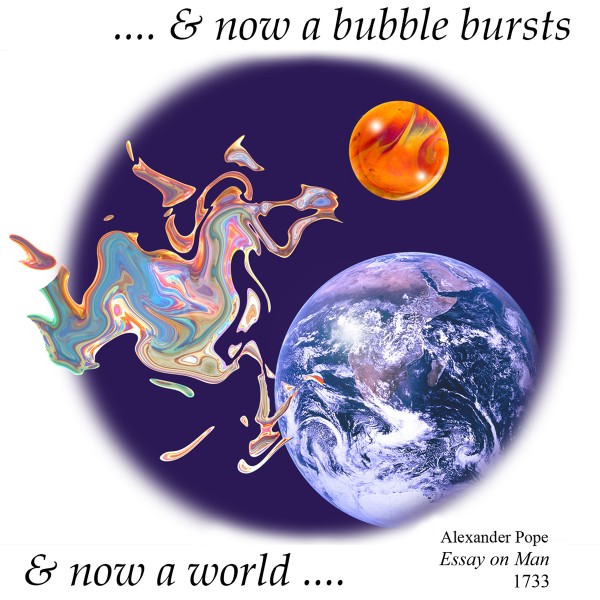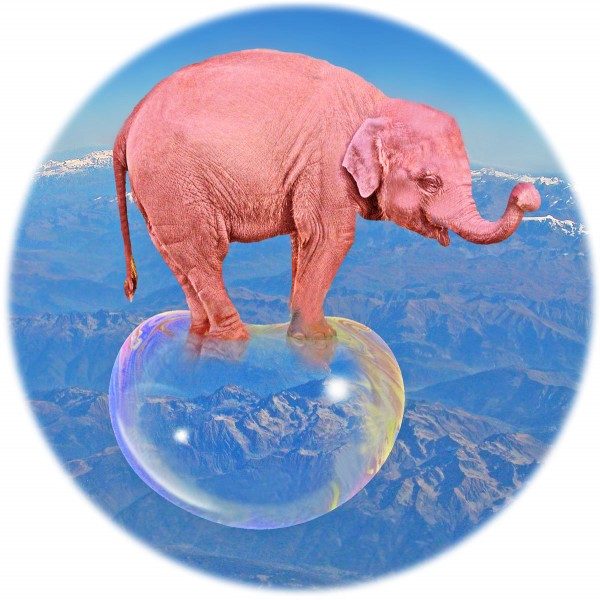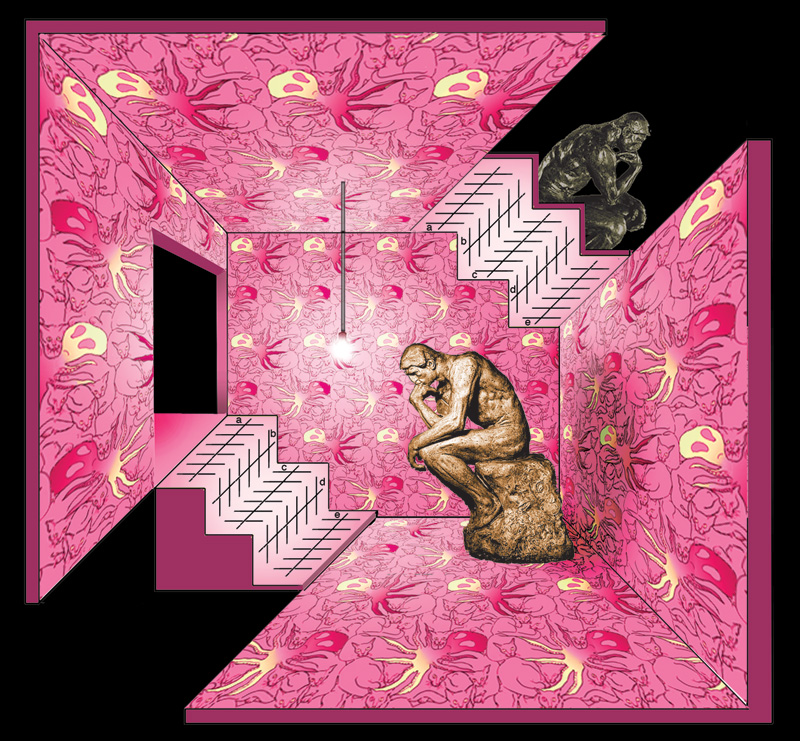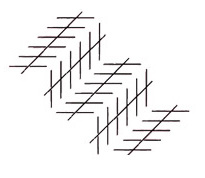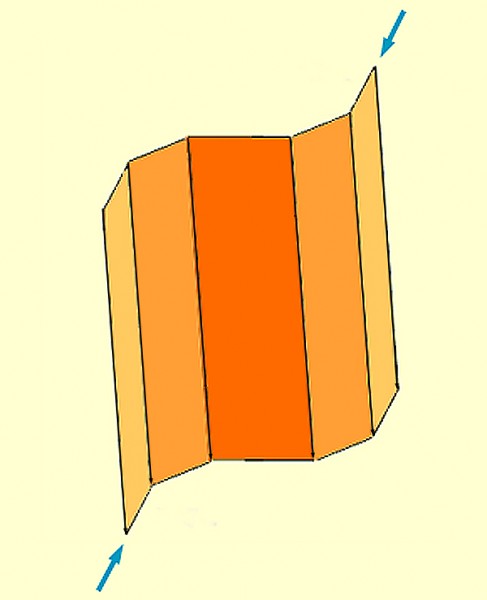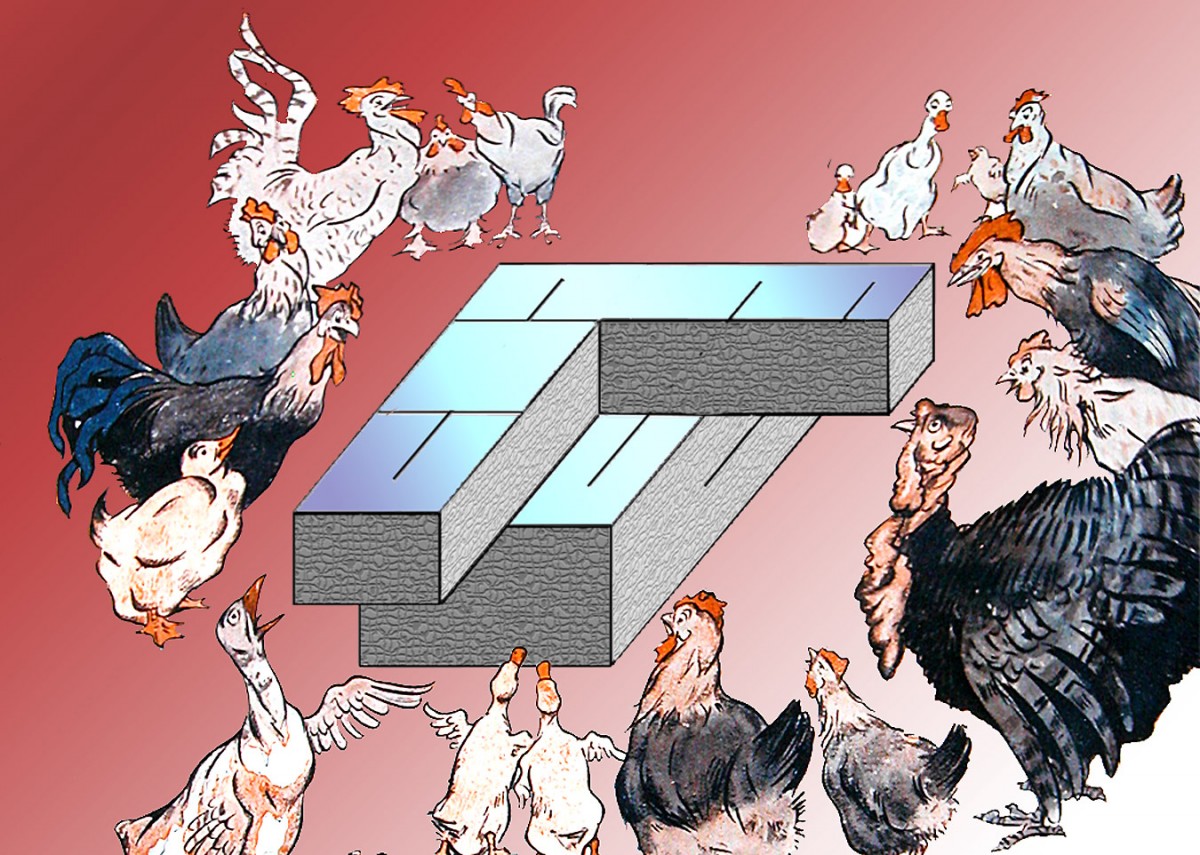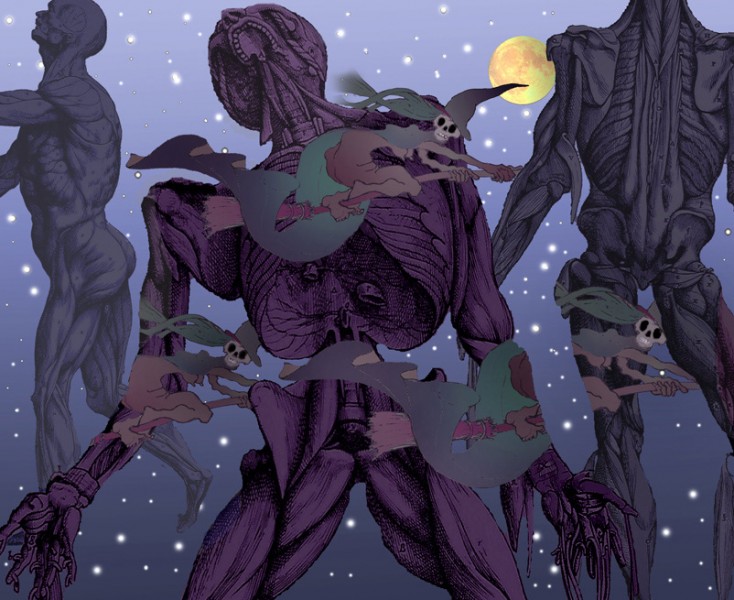
Here’s a scene for Halloween. In our everyday view of the world, the orderly way in which one thing blocks our view of another is something we can depend on to orientate ourselves in the world around us. These witches are breaking the rules. The lower ones appear and disappear at puzzling locations, and the witch lower right even vanishes behind a segment of starry sky. It’s as if the segment of sky had become an object in the visual field, instead of an aperture – an oddly weird effect, for me.
I got the idea from a wonderful painting by Rene Magritte, Carte Blanche. If you go to for that link, you’ll just need to scroll down a couple of pictures – you’re looking for a painting of a lady on a horse in a wood.
Oh, and I borrowed the musclemen from the 450 year old illustrations to the pioneering anatomical studies of Andreas Vesalius.
